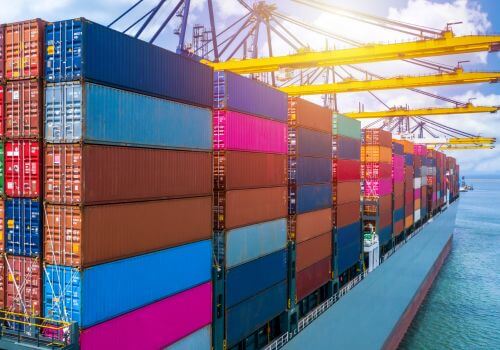What is Goods and Services Tax (GST)?
The Goods and Services Tax (GST) is a unified, consumption-based indirect tax applied to the supply of goods and services. It replaced a complex web of multiple state and federal taxes, such as VAT, excise duty, and service tax, with one streamlined system. By doing so, GST simplifies tax administration, promotes transparency, and ensures a seamless flow of input tax credits throughout the supply chain.
Unlike traditional tax models that often taxed products multiple times at different stages, GST follows the principle of “value addition.” Each participant in the supply chain — from manufacturer to distributor to retailer — pays tax only on the value they add. This eliminates cascading effects and leads to more efficient pricing for both businesses and consumers.
What are the Key Features of GST in Modern Business?
The modern GST framework is designed to align with today’s digital, interconnected, and cross-border commerce environment. Below are the major features that make GST particularly relevant for business operations and e-commerce:
- Comprehensive Tax Base: GST applies to nearly all goods and services unless specifically exempted, making it an inclusive tax regime.
- Input Tax Credit (ITC): Businesses can claim credit for taxes paid on inputs, reducing the overall tax burden.
- Destination-Based Tax: Tax revenue accrues to the state where goods or services are consumed, not produced.
- Uniformity Across the Country: Standard tax rates and procedures create consistency in business compliance.
- Online Compliance System: Digital filing, invoice matching, and online refund processes improve efficiency and reduce paperwork.
For businesses operating in e-commerce and logistics, these features mean simpler tax administration, smoother transactions across state lines, and more predictable financial management.
What is the Importance of GST for Business Operations?
GST plays a central role in shaping how modern businesses operate. It affects everything from cash flow to pricing strategy, procurement decisions, and supply chain management.
Simplified Tax Structure
Before GST, companies had to manage a maze of taxes at different stages — excise, VAT, CST, service tax, and entry taxes. GST consolidated all of these into a single system, reducing administrative headaches and freeing up resources for business growth.
Improved Cash Flow and Compliance
GST’s input tax credit mechanism ensures that tax is paid only on the net value addition, not on the total turnover. This improves working capital management and enhances liquidity, particularly for small and medium enterprises (SMEs).
Encouragement of Inter-State Trade
Under the pre-GST regime, inter-state movement of goods often involved multiple taxes and entry barriers. GST’s uniform tax structure eliminated these inefficiencies, making nationwide distribution easier and more cost-effective.
Digital Transformation of Taxation
The GST portal enables online registration, return filing, invoice uploads, and payment — reducing manual errors and enhancing transparency. This digital infrastructure aligns with the broader digital transformation of business operations.
GST in the E-commerce Sector
E-commerce has grown exponentially, and GST has fundamentally reshaped how online transactions are taxed and regulated.
Role of E-commerce Operators
Platforms such as Amazon, Flipkart, Shopee, and Shopify-based stores act as facilitators between sellers and buyers. Under GST, these platforms are classified as “E-commerce Operators” (ECOs) and bear specific responsibilities such as:
- Collecting Tax Collected at Source (TCS) on behalf of sellers.
- Filing returns detailing sales on their platforms.
- Ensuring seller compliance with GST registration and documentation.
GST Registration for Online Sellers
Any seller making taxable supplies through an e-commerce platform must register for GST, irrespective of turnover. This ensures a transparent tax trail and helps authorities monitor e-commerce transactions more effectively.
Impact of Pricing and Margins
Because GST is levied at multiple stages — from procurement to final sale — businesses must carefully structure pricing to maintain profitability while staying competitive. The availability of input tax credits helps offset tax liabilities, thereby stabilizing margins.
Interstate Fulfillment and Taxation
E-commerce businesses often operate multiple fulfillment centers across states. Under GST, interstate shipments are treated as supplies between distinct persons, requiring proper invoicing and input tax accounting. However, this system enables easier tracking and accurate credit claims.
GST and the Logistics Industry
Logistics is the backbone of e-commerce and business operations. The introduction of GST has significantly improved logistics efficiency and supply chain management in several ways.
Elimination of Checkposts and Border Taxes
Before GST, interstate goods movement was delayed at checkposts for tax verification and documentation. With GST’s unified tax structure and electronic documentation (e-way bills), these barriers were removed, reducing transit times and logistics costs.
Streamlined Warehousing Strategy
Earlier, companies established warehouses in multiple states to avoid entry taxes. With GST, the need for tax-driven warehousing has disappeared. Businesses can now consolidate warehouses strategically based on demand and operational efficiency rather than tax implications.
E-way Bill Compliance
The e-way bill is a mandatory document for transporting goods above a specified value threshold. It allows authorities to track the movement of goods and prevent tax evasion. For logistics companies, compliance with e-way bill regulations is essential to avoid penalties and ensure smooth delivery operations.
Reduced Logistics Costs
GST has cut down logistics costs by simplifying taxation and eliminating redundant levies. Businesses now save time and money on compliance and can pass those benefits to customers through competitive pricing.
GST and Supply Chain Optimization
The GST system has driven companies to revisit and optimize their entire supply chain networks. The ability to claim input tax credit across all stages encourages efficiency and transparency.
Consolidated Supply Chains
Under the previous tax system, companies often fragmented their supply chains to minimize tax liabilities. GST enables them to consolidate operations, leading to better economies of scale and improved resource allocation.
Greater Transparency and Accountability
Every invoice under GST is digitally recorded and verified. This transparency minimizes fraud, promotes accountability, and encourages better supplier relationships.
Enhanced Decision-Making Through Data
GST’s digital records give businesses access to comprehensive transaction data. This helps with demand forecasting, inventory planning, and compliance monitoring, driving smarter operational decisions.
GST Compliance and Return Filing
Timely compliance is crucial for businesses to avoid penalties and retain eligibility for input tax credits.
Key GST Returns
Businesses typically need to file:
- GSTR-1: Outward supplies (sales).
- GSTR-2B: Auto-drafted inward supplies (purchases).
- GSTR-3B: Summary return for tax payment.
- GSTR-9: Annual return consolidating monthly filings.
These filings must be accurate, as mismatched invoices or late submissions can lead to blocked credits and penalties.
Input Tax Credit (ITC) Management
Proper documentation and invoice matching are critical to claiming ITC. Businesses must ensure that suppliers are compliant because any non-compliance can affect the buyer’s ability to claim credit.
Automation in Compliance
Modern accounting tools and ERP systems integrate GST modules that automate return filing, reconciliation, and record-keeping. This reduces human error and saves time for finance teams.
Common GST Challenges for Businesses
While GST simplifies taxation, it also introduces certain operational challenges that businesses must navigate carefully.
Complex Return Reconciliation
Reconciling input and output invoices across vendors and customers can be time-consuming, especially for high-volume businesses like e-commerce.
Frequent Regulatory Updates
GST rules and rates undergo periodic revisions. Businesses must stay updated with changes to ensure ongoing compliance.
Managing Multi-State Operations
For companies operating in several states, managing registration, documentation, and compliance at multiple levels requires careful coordination.
Working Capital Blockage
In some cases, delays in input tax credit or refunds can create temporary working capital shortages, especially for exporters or seasonal businesses.
Benefits of GST for Businesses
Despite the challenges, the benefits of GST far outweigh the drawbacks. Businesses across sectors have experienced measurable improvements in efficiency and profitability.
- Unified Market Access: Businesses can sell and ship goods anywhere in the country without worrying about entry or state-specific taxes.
- Lower Operational Costs: Simplified compliance and logistics have reduced overheads and transit delays.
- Enhanced Transparency: Digital documentation ensures traceability and reduces the risk of tax evasion.
- Boosted Competitiveness: Lower tax cascading and input credits allow businesses to price products more competitively.
- Encouragement for Digital Transformation: The GST system’s reliance on digital processes pushes companies toward modern, automated accounting systems.
GST's Impact on International E-commerce
As global e-commerce expands, GST plays a vital role in ensuring fair taxation on cross-border transactions.
Taxation of Imports and Exports
Exports are typically zero-rated under GST, meaning businesses can claim refunds for input taxes paid. Imports, on the other hand, attract Integrated GST (IGST), ensuring parity between domestic and international suppliers.
Cross-border Compliance
International sellers supplying goods or digital services to local customers may need GST registration, depending on their business model and the jurisdiction’s specific rules.
Facilitating Global Trade
With simplified tax credits and uniform processes, GST fosters a more favorable environment for international e-commerce companies entering new markets.







